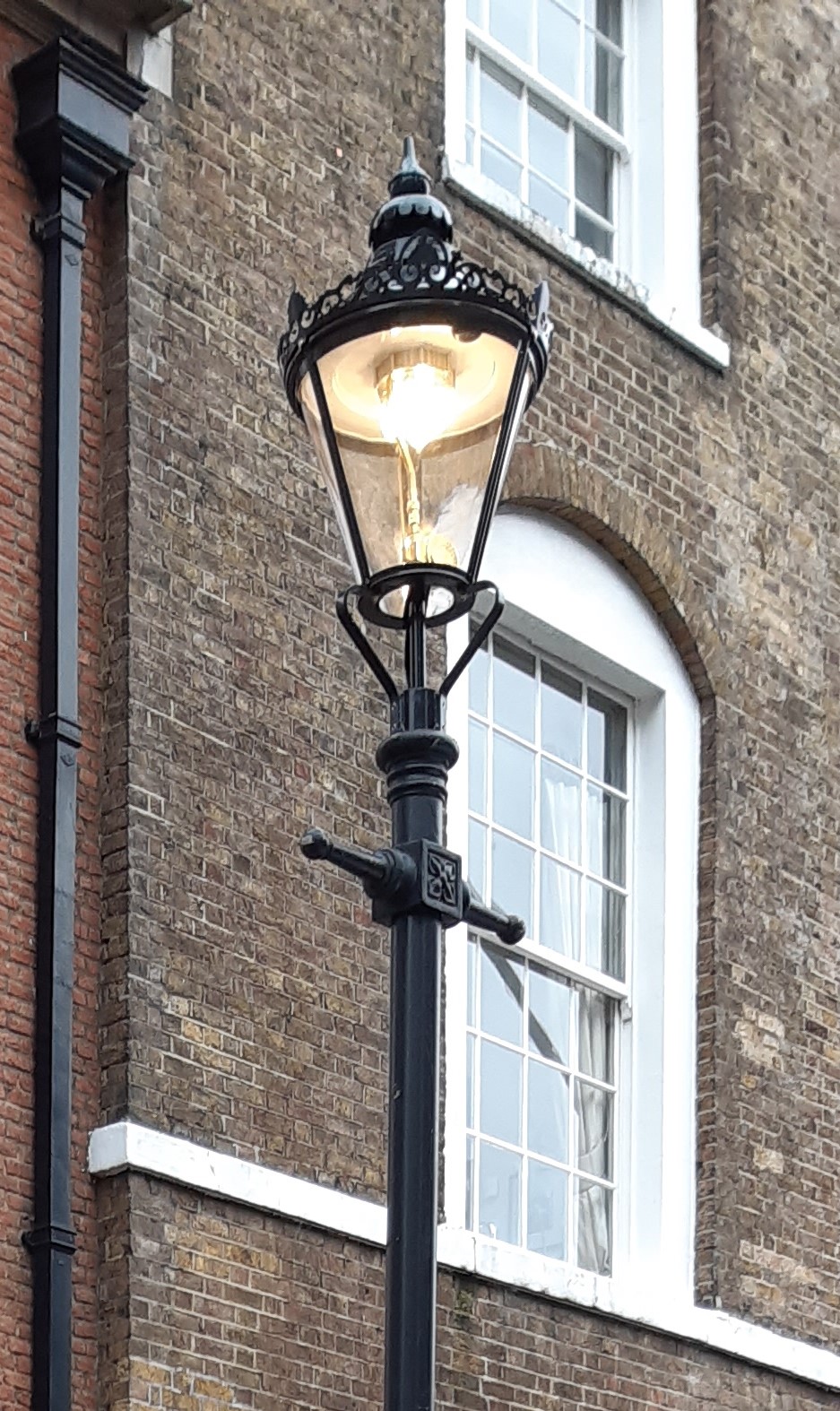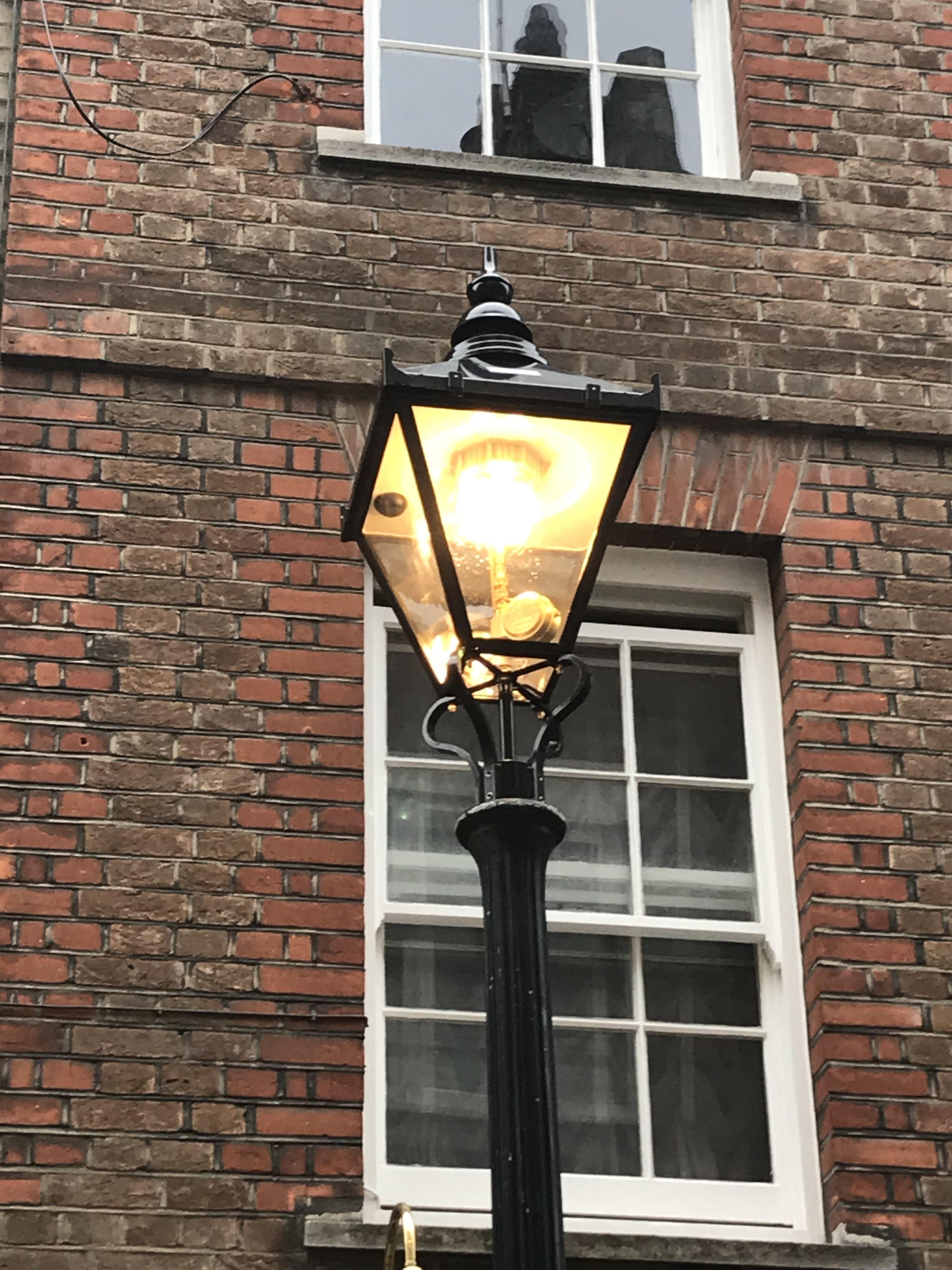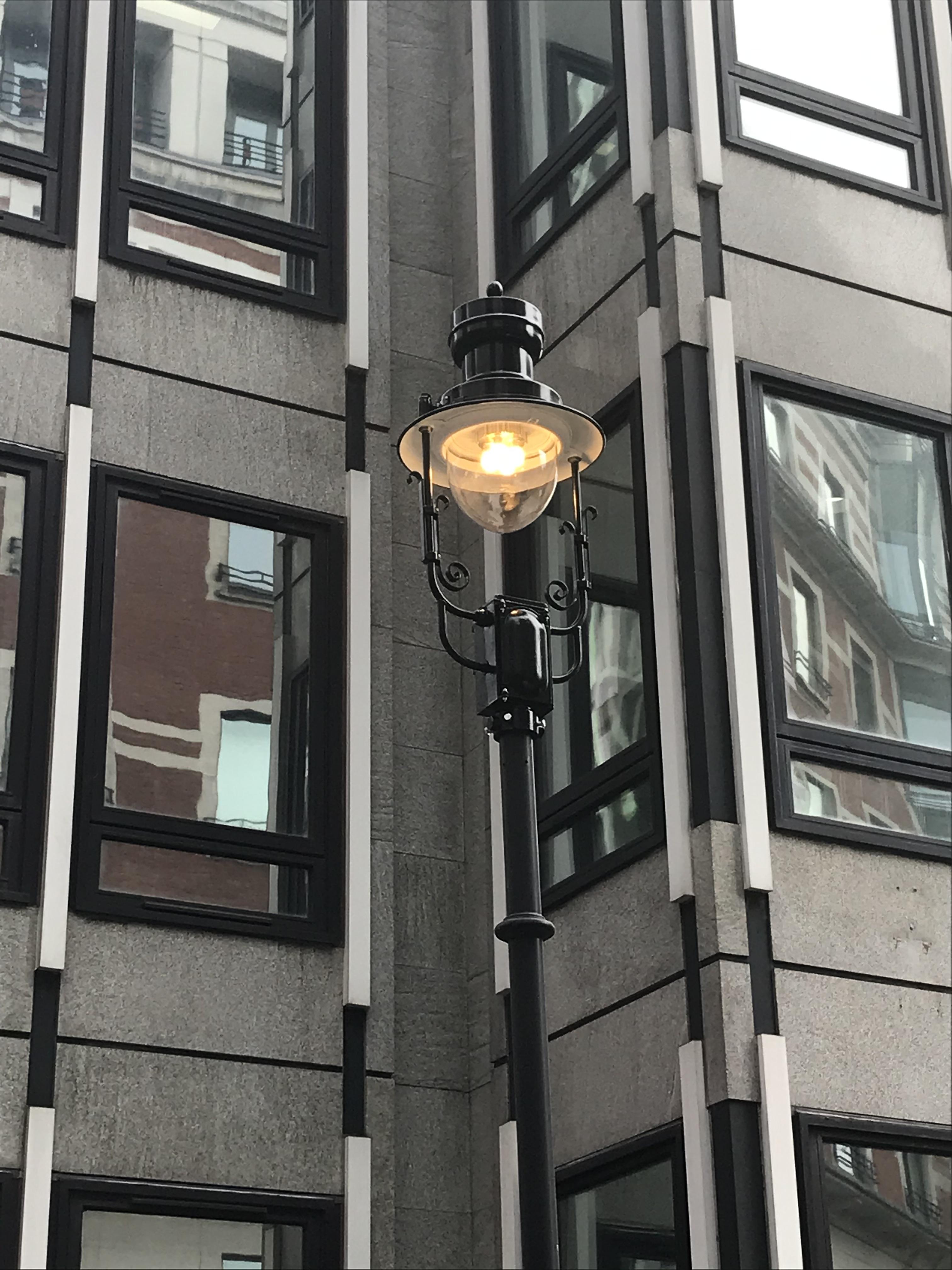The gas lamp review
From Thursday 20 October to Sunday 20 November, we undertook a four-week engagement exercise to listen to your feedback.
This consultation has now closed. Read the decision about gas lamps taken on 22 November 2022.
Introduction
We are proud of our city’s heritage and as its cultural custodians, it is a responsibility we take seriously. This requires balancing this role with the needs and demands of managing a modern world city. A key element of this is providing high-performing lighting for our public spaces so they remain welcoming and safe.
Around 300 of our 14,000 streetlights are gas powered. These structures are highly valued and present a special character to their areas. However, gas lighting is increasingly difficult to maintain, bad for the environment and does not provide sufficient lighting. This poses a risk to the personal safety of our residents and visitors to our city.
We’ve created a programme to replace the gas lanterns, the box on top of the lamppost that contains the light, with replicas that very closely mimic the originals in style but use LED lights instead. The gas effect LED lanterns are designed to look almost indistinguishable from the original lanterns, as we are retaining the existing lamp columns to preserve our heritage assets.
Gas lamp review
As we have replaced some of the gas-powered lamps with LED replicas, we have taken the decision to review their impact. This review will look at how effective the gas lights are in terms of their light levels, and whether the gas effect LED lights are a close copy in terms of design and fitting. This planned review will give us the time to receive and consider your feedback.
From Thursday 20 October to Sunday 20 November, we undertook a four-week engagement exercise to listen to your feedback. We invite our residents and interested stakeholders to join us at one of three site visits to give you a chance to see the gas effect LED lanterns in operation, discuss the works undertaken so far and answer your questions.
If you have any questions, please email us: lighting@westminster.gov.uk.
Why are you upgrading the gas lamps to LED lamps?
There are several reasons why we need to upgrade the gas lamps these include safety, maintenance and the environment:
Safety
We have a duty to keep our street lighting in good working order to make sure our neighbourhoods remain safe and to help reduce the risk of crime.
We often receive complaints regarding crime and anti-social behaviour from residents, businesses and the police, with requests to increase light levels on roads with gas lighting. In the past we have increased the gas output to make the lights brighter and added additional electric lighting on the road to help. Unfortunately, both those options have failed to provide enough light to meet current lighting standards.
Streetlights are there to serve a purpose – to ensure people on our streets, especially those more vulnerable, feel safe at night. We need to ensure that our streetlights, deliver on that primary objective regardless of their style or history.
Maintenance
Gas lamps are of historical value but due to their age, mostly over 100 years old, they are becoming increasingly difficult, time-consuming and costly to maintain.
There are often very long delays to repair gas main pipes, resulting in some of our gas lamps not operating which causes long dark extended periods.
When a gas mains connection needs replacing, we have in some cases had to wait eight months for a quote to repair it. A gas light can cost up to £26,000 each to replace, and often require road closures. We have also been advised by our maintenance supplier that there is a lack of stock of materials needed to maintain gas lamps which can feed into these delays. This poses a risk to the personal safety of our residents and visitors to our city, if the lamps have no gas supply to them, or are not producing sufficient light.
Electrifying our gas lamps enables us to modernise to lower wattage lights and have greater control via a central management system (CMS). The CMS monitors the lighting, making it easier to identify faults remotely and manage lighting levels more efficiently.
Environment
Replacing the gas lights is part of a series of measures to help us to become a carbon zero council by 2030.
Gas lamps currently produce 200 tonnes of carbon per year. That’s the equivalent of 40 return flights from London to Sydney. Electrifying our gas lighting will reduce carbon emissions by over 85%.
The embodied carbon in the work required to electrify our lights is just under one year’s gas emissions. Embodied carbon means the amount of carbon it takes to make the lanterns, transport and install them, remove the gas pipes and install the electrical power. The resulting carbon from the LEDs would be 30 tonnes a year.
Around 300 of our 14,000 street lightings in Westminster are gas powered, and some are listed structures. Whilst this is a small amount of the overall number of lights, they proportionally produce eight times as much carbon emissions yet provide only a quarter of the light as a much lower energy modern LED lantern.
How are you maintaining their authenticity?
We are committed to ensuring that the special character of the existing lighting on impacted streets is retained. We have worked closely with a specialist lighting manufacturer to develop a solution which replicates the look and style of our heritage lanterns without significantly changing their appearance. We have trialled different colour lights as well to best match the colour of the gas lights.
We have engaged with statutory bodies in the design of the gas effect LED lanterns. These lanterns replicate the previous gas lanterns in appearance so that the aesthetics of the lantern are not changed. We want to continue to support the city’s unique heritage whilst also ensuring good management of the city. We have done this by adding piping and clock boxes inside the gas effect LED lanterns to mimic the gas lights appearance during the day.
 |
 |
 |
| Grosvenor (Kingsley) | Windsor (Dickens) | Rochestor (Chesterton) |
The above pictured lanterns are representative of the newly manufactured LED versions of the gas lanterns. The attention to detail including the pipe work, brass clock and replica mantles all look and give the appearance of an actual gas lantern. The output of the LEDs can also be adjusted throughout the night in appropriation to the amount of people or traffic on the street.
Which gas lamps have you electrified so far?
Around 300 of our 14,000 streetlights are gas powered and some are listed structures.
Earlier in 2020 and 2021, we electrified some streets and changed the lanterns on non-listed lamp columns that closely mirror the appearance of the original gas lights. The existing lamp columns were not changed or moved.
Lanterns have been upgraded on the following roads:
- James Street
- Crown Passage
- Crown Court
- Martlett Court
- Pickering Place
- New Row
Will you be electrifying listed gas lamps?
To replace gas lights that are listed, we will require listed building consent. This will involve further discussions with our planning department and Historic England. The consent process will take a couple of months per street to approve. These discussions will ensure that the correct consents are sought, and that a clear and convincing justification is provided as part of the planning process, which can be considered against any harm that may be identified to heritage assets.
Why not increase the light levels of the existing gas lamps rather than replace them?
The gas lamps are unable to have more gas pressure to give adequate lighting levels to meet British standards. In the early 2000s', we increased the output and number of gas mantles in some of the gas lamps. However, they still didn’t give out more than a quarter of the required light needed to meet British lighting standards.
Following this work, we looked to use additional electric wall lighting to improve lighting levels on those streets without changing the gas lighting. However, many of the buildings on these streets are listed and lighting attachments weren’t permitted as part of the listed consent process, so until now we’ve been unable to resolve complaints regarding lighting levels.
By changing to electrical power, we can use of LED technology to drastically improve lighting levels, reduce long delays to repair power supplies, greatly reduce energy and carbon usage and provide a more reliable lighting source that is able to be remotely monitored.
Has the council looked at other alternative power supplies like Biomethane or Hydrogen?
Yes, we have looked into alternatives that can make use of the gas pipes. However, none provide the carbon emission reductions of electrical power. There would also be underground supply repair issues, as we have experienced with gas mains.
Hydrogen currently has vastly insufficient production and there are currently no cost-effective locations to store the hydrogen gas supply. It is also very inefficient to produce; around 3-5 times more than the production of electricity, hence vastly more carbon emissions. It would require new components in all the gas lights, and the gas main pipes would need to be replaced as the molecules of hydrogen are smaller so can leak through the existing aged London network pipes even more than current gas supplies.
Biomethane and other forms on anaerobic digestion which produce natural gas as a by-product of organic processes have the same issue. They have very high storage rates and burning speed, requiring wholesale replacement parts. They also produce a higher level of greenhouse emissions than electrical conversion.
How much will this work cost?
We have a budget of just under £3million to undertake this work, which is a lot of money; however, keeping the gas lights will end up costing a lot more.
Currently we spend £26,000 per year to maintain the gas lights, and last year paid £75,000 for the gas energy. With the nationwide increased energy costs, we are looking to pay over £120,000 this year for energy. Over 25 years, even if we add 3% per year to the cost to maintain and 5% annual increase to energy, we are looking at over £6.5million in total costs.
Changing all lights to gas effect LEDs with the £3million budget will include:
- surveys of the existing gas pipes
- research and development into the gas effect LEDs and lanterns to meet British lighting standards
- the listed consent process
- removing the gas piping
- installing electrical power
The annual maintenance costs would be less than £3,000 per year with an electrical energy bill of £13,000. Over 25 years with the same inflation as above, the total is £3.6 million. Plus, we would have reduced the amount of carbon emissions from 5,000 tonnes to 750 Tonnes.
How has Westminster City Council consulted with the public about this work?
Since 2019, we have held discussions with statutory stakeholders, our planning department and Historic England. We were seeking a sympathetic solution, mindful of our duty of care to keep the lights working and respond to the climate emergency by reducing carbon emissions. For listed assets, these discussions will be ongoing to ensure that the correct consents are sought, and that a clear and convincing justification is provided as part of the planning process.
During 2020 and 2021, notification letters were sent to affected residents for the work on their streets.
During 2021 and early 2022, five on-site engagement sessions with cabinet members, executive directors and ward councillors took place. The gas effect LED lantern obtained acceptance from all parties and suggested minor amendments were considered, resulting in the current generation of lanterns installed on Queen Anne’s Gate. A number of those are now looking at a similar process to electrify their gas lights for the same reasons. .
We have undertaken a four-week stakeholder engagement exercise between Thursday 20 October to Sunday 20 November. We are inviting residents and interested stakeholders to join us at one of three site visits to give you a chance to see the gas effect LED lanterns in operation, discuss the works undertaken so far and answer your questions.
If you have any questions, please email us: lighting@westminster.gov.uk.
If you haven’t been able to visit the LED streetlights on Queen Anne’s Gate but have seen them in your own time, you can also provide feedback about them via the same email address.
Following the site visits, we will review the feedback ahead of a review report to the cabinet member.
What do LED lamps look like compared to gas lamps?
Below are photos showing existing gas lights on the left and proposed LED light on the right.
| Gas | LED |
|
Image

|
Image

|
|
Image

|
Image

|
Published: 19 October 2022
Last updated: 25 September 2024
